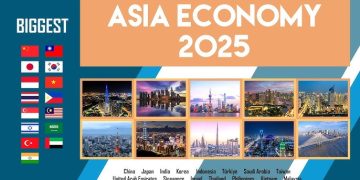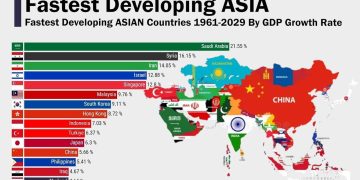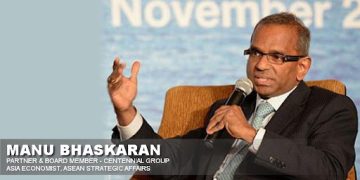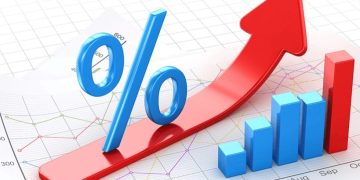1. Introduction: A Quiet Crisis Beneath the Surface
In late 2025, the European economy stands at a peculiar intersection — not of collapse, but of fatigue.
The shocks of the past half-decade — the pandemic, the war in Ukraine, inflation spikes, energy insecurity, and fragmented fiscal responses — have left behind not just cyclical downturns, but deep structural scars.
Unlike the roaring recovery of the United States or the industrial resurgence of East Asia, Europe’s economic engine hums quietly, constrained by aging infrastructure, demographic drag, and a rigid governance system that struggles to adapt to global change.
The continent’s malaise is not dramatic, but systemic — a slow erosion of competitiveness that threatens its role in the world economy.
As globalization recedes and new regional blocs emerge, the European Union (EU) faces an uncomfortable question:
Can it redefine itself not as a follower of global trends, but as a co-architect of the post-globalization order?
2. From Globalization to Fragmentation
For decades, Europe thrived on globalization.
Its export-driven economies — Germany’s machinery, Italy’s design, France’s luxury, the Netherlands’ logistics — were perfectly tuned to a world of open trade and low transport costs.
But as supply chains regionalized and protectionism returned, Europe’s traditional model faltered.
Between 2020 and 2025, EU exports to non-EU countries fell in real terms, while energy imports remained volatile. The shift toward “friend-shoring” and “near-shoring” — particularly by the United States and Asian economies — has reduced Europe’s leverage in global trade.
Moreover, the EU’s internal market, though vast, is fragmented by national regulations and political friction.
In sectors like AI, clean tech, and semiconductors, Europe’s firms face high compliance costs and slow policy responses, often lagging behind U.S. or Chinese competitors.
The European Commission’s attempts to counter this trend — such as the Green Industrial Plan and Strategic Autonomy initiatives — signal intent but not speed. Bureaucratic inertia remains a formidable obstacle.
3. Demographic Drag: The Aging of a Continent
Demographics represent Europe’s most persistent and overlooked challenge.
The median age in the EU reached 44.5 years in 2025, compared with 38 in the United States and 32 in China.
Labor shortages have become endemic in key sectors — from manufacturing to healthcare — forcing governments to rely increasingly on immigration, a politically volatile issue.
Germany, Italy, and Spain, in particular, face shrinking working-age populations that threaten productivity and fiscal balance. Pension expenditures consume over 12% of GDP in several states, crowding out public investment.
This demographic shift is not merely statistical — it shapes politics. Older electorates tend to favor stability over innovation, slowing structural reform. The EU’s social model, once its proudest achievement, now risks becoming its heaviest anchor.

4. Technological Lag and Industrial Stagnation
In the digital economy, Europe trails behind.
While it has world-class research institutions and niche tech leaders, the continent lacks scalable innovation ecosystems.
Venture capital investment in European startups remains less than one-third of that in the U.S., and regulatory rigidity discourages risk-taking.
The AI Act, though pioneering in its ethical safeguards, has been criticized for burdening smaller firms with compliance complexity.
In semiconductors, despite the European Chips Act, the continent’s global share of production remains below 10%.
Meanwhile, Asia races ahead in electric vehicles, robotics, and green energy technologies — areas where Europe once led.
The gap is not one of intelligence or talent, but of coordination and ambition.
European policymakers have yet to reconcile their precautionary ethos with the speed of global innovation.
5. Fiscal Fragmentation: The North-South Divide Persists
Economic divergence within the EU has deepened.
Northern states (Germany, Netherlands, Finland) maintain fiscal discipline and competitiveness, while southern economies (Italy, Greece, Spain) struggle with debt and sluggish growth.
The European Stability Mechanism (ESM) and Recovery Fund provided short-term relief during the pandemic, but structural asymmetry persists.
Inflation shocks hit southern economies harder, while northern exporters benefited from a weaker euro.
The absence of a unified fiscal policy continues to limit the EU’s macroeconomic agility.
Calls for a European Treasury or common fiscal authority have resurfaced, but political consensus remains elusive.
Without deeper integration, the eurozone risks permanent internal imbalances — a “two-speed Europe” that undermines solidarity.
6. Energy and Climate: Between Green Ambition and Industrial Reality
Europe’s green transition, while visionary, is facing hard limits.
The Fit for 55 and Green Deal frameworks demand rapid decarbonization, but high energy costs and supply bottlenecks threaten industrial competitiveness.
After Russia’s gas disruption, Europe diversified toward LNG and renewables — yet electricity prices remain nearly double those in the U.S.
Industries like chemicals, steel, and automotive are quietly relocating to lower-cost regions.
At the same time, the EU remains committed to its climate neutrality goal by 2050, investing heavily in hydrogen, wind, and carbon capture.
The dilemma is profound: how to maintain economic vitality while leading the world in sustainability.
This tension defines Europe’s identity in the 21st century — a moral leader constrained by material limits.
7. Geopolitical Pressures: Autonomy or Dependence?
Strategic autonomy has become the EU’s mantra.
But in practice, Europe remains dependent on the United States for defense and on China for trade.
The war in Ukraine reinforced transatlantic unity but exposed the EU’s limited hard-power capacity.
Meanwhile, economic ties with China have cooled. The EU’s “de-risking” agenda has led to reduced investment and rising trade barriers, even as European exporters — particularly in automotive and machinery sectors — depend heavily on Chinese demand.
The result is strategic ambivalence: Europe desires independence but cannot afford isolation.
Its foreign policy is caught between values and interests, autonomy and alignment.
8. Social Strain and Political Fragmentation
Rising inequality, inflation fatigue, and disillusionment with Brussels have fueled populist movements across Europe.
From France’s farmers’ protests to Germany’s AfD surge, the political landscape has shifted rightward and inward.
The European Parliament elections of 2024 revealed growing skepticism toward globalization and immigration.
This populist undercurrent complicates reform.
Leaders find it increasingly difficult to justify fiscal transfers or immigration policies to voters who feel “left behind.”
If unaddressed, this could erode the EU’s institutional legitimacy and weaken collective action — the cornerstone of its postwar success.
9. Toward a Post-Globalization European Model
Despite these challenges, Europe possesses unique strengths — technological ethics, social cohesion, and regulatory leadership.
In a world drifting toward economic blocs, these attributes could define a new model of balanced capitalism.
A “Resilient Europe” would emphasize:
- Regional self-sufficiency in critical sectors (energy, food, tech components).
- Coordinated fiscal policy with flexible social safety nets.
- A pragmatic, not moralistic, approach to global partnerships.
- Deepened ties with emerging regions — ASEAN, Africa, Latin America — beyond the transatlantic axis.
To achieve this, however, Europe must rediscover political courage — the willingness to innovate institutionally as well as economically.
10. Conclusion: The Weight of Inertia
Europe’s challenge is not collapse but stagnation — a slow suffocation of its creative and industrial spirit under layers of regulation and caution.
In the 20th century, Europe rebuilt itself from war and division. In the 21st, it must rebuild its confidence.
The world no longer waits for Europe’s consensus.
If it cannot act swiftly, it risks becoming a museum of prosperity, admired for its past but irrelevant to the future.
Yet, within this quiet crisis lies a profound opportunity:
to prove that stability, sustainability, and innovation are not incompatible —
that a united Europe, once again, can lead not by dominance, but by example.






































